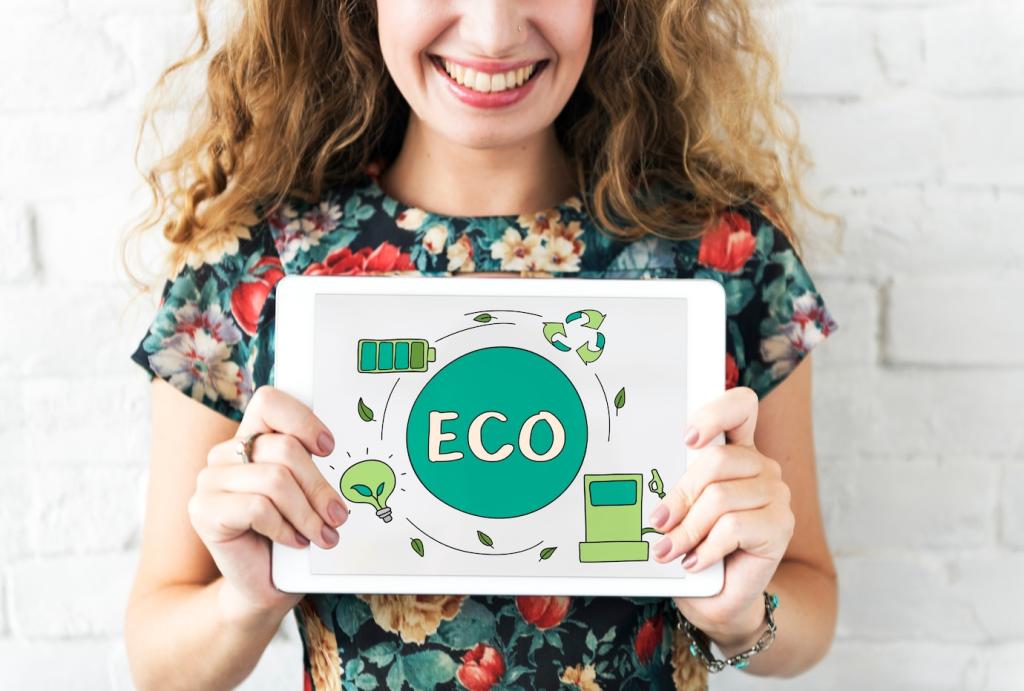Words That Change Habits: The Impact of Copywriting on Promoting Sustainable Practices
Chosen theme: The Impact of Copywriting on Promoting Sustainable Practices. Discover how purposeful language turns good intentions into daily action, strengthens trust, and powers real environmental progress. Read on, share your thoughts, and subscribe if you want more human-first insights on sustainable communication.

Why Words Move the Needle on Sustainability
Many people already care about the planet, yet hesitate at the moment of choice. Copy bridges the gap by simplifying decisions, naming benefits, and celebrating small wins. Share a phrase that once nudged you toward a greener habit, and tell us why it worked for you.
Why Words Move the Needle on Sustainability
How we frame sustainability changes how it feels. “Durable and repairable” beats “eco-friendly” because it speaks to longevity and pride. Test positive framing, highlight immediate gains, and invite readers to try one wording shift this week and report their results.
Why Words Move the Needle on Sustainability
A neighborhood sign that read “Refill here, replant there” sparked conversations and routines, while a chart nearby went unnoticed. Stories create memory hooks that numbers rarely do. Share your own short story in the comments to inspire others to try a new sustainable habit.
Behavioral Copywriting Techniques for Greener Choices
People are motivated to avoid losses, but scare tactics can backfire. Try honest contrasts: “Skip single-use and keep fifteen dollars in your pocket this month.” Keep it specific, fair, and verifiable, then ask readers to comment with better examples we can all borrow.
Behavioral Copywriting Techniques for Greener Choices
“Join 4,000 neighbors who refill weekly” legitimizes effort and normalizes routine. Show real faces and quotes, not vague claims. Invite your community to submit short testimonials about everyday sustainability wins, and turn them into a living wall of encouragement.
Building Trust: Tone, Transparency, and Proof
Avoid grand, fuzzy promises. Use crisp claims like “Made to be repaired for five years” and explain how. When readers feel respected, they return. Drop a comment with a headline you trust, and we will feature thoughtful examples in a future roundup.
Building Trust: Tone, Transparency, and Proof
Back every environmental claim with sources, numbers, and processes. Link to lifecycle studies, name materials, and quantify reductions. Specifics shrink doubt. Encourage readers to ask questions; invite them to subscribe for a monthly breakdown of a single claim, start to finish.
Building Trust: Tone, Transparency, and Proof
Watch for vague labels like “eco,” unsupported certifications, and distracting nature imagery. Replace them with verifiable practices, clear tradeoffs, and promised updates. Ask your audience to flag unclear phrases, then revise publicly to demonstrate learning and accountability.


Storytelling That Seeds Long-Term Change
Frame the buyer as the hero, the problem as waste, and your product as a trustworthy guide. Celebrate milestones, not perfection. Invite readers to share their starting point and one small step; we will cheer progress in our next newsletter.
Storytelling That Seeds Long-Term Change
Describe the tangible: the weight of a refillable bottle, the quiet of a street on car-free day, the scent of a soap that lasts longer. Sensory cues anchor memory. Ask readers to describe one sustainable habit using senses and post it to inspire others.
Search Intent Mapping
Match content to questions people actually ask: “how to recycle shoes locally,” “refill store near me,” or “repairable backpack review.” Build pages that genuinely solve problems, then invite readers to suggest new topics we should cover next.
Natural Language and People-First Structure
Avoid buzzwords and empty modifiers. Use headings, FAQs, and summaries that respect attention. When readers feel understood, they return and refer. Ask visitors to comment with the terms they search before buying sustainable products, and we will expand our glossary.

Metrics That Matter: Testing Impact, Not Just Clicks
Beyond open rates, measure refill frequency, opt-ins for slower shipping, repair kit redemptions, and community submissions. Tie copy changes to these signals. Share your top metric in the comments, and we will offer copy suggestions tailored to your goal.
Metrics That Matter: Testing Impact, Not Just Clicks
Test headlines that emphasize durability versus savings, stories versus specs, and defaults versus prompts. Keep experiments simple and ethical. Invite readers to subscribe for a monthly teardown where we share anonymized test setups, learnings, and templates.
Channels and Formats: From Product Pages to Packaging
01
On-Page Product Descriptions
Lead with use, longevity, and care. Explain repair options and end-of-life plans with clear links. Invite readers to save a maintenance guide and comment if they want printable versions or translations, helping more people sustain what they already own.
02
Email and Lifecycle Nudges
Send timely tips tied to seasons and routines: wash-cold reminders, refill prompts, or repair workshops. Keep messages short, specific, and cheerful. Ask subscribers to reply with the reminder cadence they prefer so we can co-create a kinder inbox.
03
Packaging and In-Store Microcopy
Turn packaging into a teacher: simple icons, repair QR codes, and return instructions. In-store, place friendly prompts near decision points. Share photos of effective examples you spot, and we will feature a community gallery that others can learn from.
